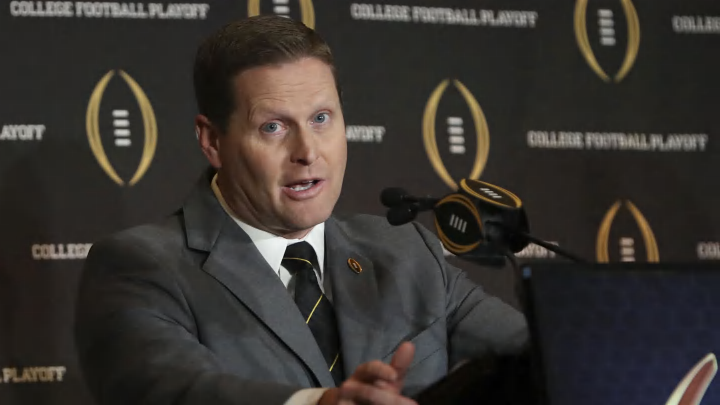NCAA AD’s Learn Proposed Roster Limits for Revenue Sharing

Athletic directors around the country now have a little more clarity about the roster limits they’ll be dealing with in the new era of revenue sharing.
Per multiple reports, the House vs. NCAA long-form settlement is ready to be filed in court on Friday. Conference commissioners agreed to one of the final pieces of the puzzle, which was the roster limits for major sports.
In all, athletic departments that opt into the new model could be dealing with as many as 60 new roster spots, and by extension, scholarships.
If the settlement is approved as is, football teams will have 105 roster spots, men’s and women’s basketball will have 15, volleyball will have 18, softball will have 25 and baseball will have 34.
In some sports the roster increases are pronounced. Football programs currently have 85 players on scholarship. The settlement would allow for an increase of 20 scholarships.
Men’s basketball would go up by two. Volleyball would go up by six and softball would go up by 13. Baseball would see the most dramatic shift, as it would bring the addition of 22.3 roster sports.
The report indicated that sports will still have the flexibility to spread scholarships out among its roster, as in partial scholarships. But it will clearly give schools the chance to offer everyone on its roster some kind of scholarship, something that was nearly impossible in a sport like baseball.
With that ends perhaps the final sticking point in a settlement that will reshape how college sports operates, both at an administrative level and at a student-athlete level.
Part of the settlement includes revenue sharing for student-athletes. If approved, that figure could be anywhere from $20-22 million per school. That will come from revenue streams like TV money and the lion’s share will go to fund those scholarships.
Every school that plans to opt-in will be challenged to reach the figure, no matter how much revenue they have coming in. But the power conference schools are already lining up to do so.
Utah athletic director Mark Harlan told reporters at Big 12 media days recently that the Utes plan to share to the full amount, whatever it ends up being.
Other Big 12 athletic directors that have already committed to share at the maximum level include TCU’s Jeremiah Donati and Texas Tech’s Kirby Hocutt.
In the Big Ten, new Ohio State athletic director Ross Bjork has made the same pledge. Nebraska’s Troy Dannen recently said his school has already budgeted the amount in for next year and said that both Texas and Washington have done so, too.
If a judge approves the settlement, it will take effect for the 2025-26 athletic year.
